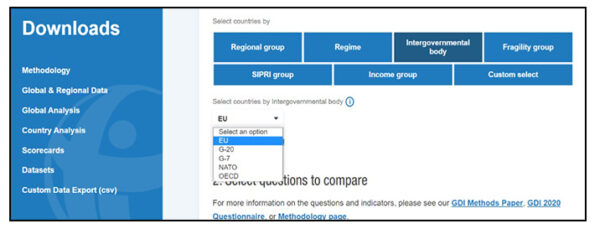Corruption undermines the legitimacy and effectiveness of government institutions in all sectors, but it thrives in areas where large budgets intersect with high levels of secrecy and limited accountability, write Michael Ofori-Mensah, Denitsa Zhelyazkova and Harvey Gavin.
The defence and security sector features all these risk areas, making it particularly vulnerable. The combination of secrecy, limited oversight and, often, high levels of discretionary power in decision-making, creates an environment ripe for corruption. This vulnerability not only undermines the ability of governments to fulfil their primary duty to their citizens of keeping them safe, it also undermines their legitimacy.
Transparency International – Defence & Security is working to address this issue. A key contribution is our recent involvement in NATO’s Building Integrity Institutional Enhancement Course. This program focuses on supporting national governments with capacity building in developing Integrity Action Plans aimed at strengthening the integrity of their defence institutions. Before drawing up these plans, defence officials must identify areas most at risk of corruption. This is where the recent enhancement aimed at improving accessibility and use of our Government Defence Integrity Index (GDI) becomes an invaluable diagnostic tool.
The GDI is the world’s leading assessment of corruption risks in national defence institutions. As a corruption risk assessment tool, it examines the quality of institutional controls to manage the risk of corruption in nearly 90 countries around the world on both policymaking and public sector governance and covers five major risk areas:
- Financial: includes strength of safeguards around military asset disposals, whether a country allows military-owned businesses, and whether the full extent of military spending is publicly disclosed.
- Operational: includes corruption risk in a country’s military deployments overseas and the use of private security companies.
- Personnel: includes how resilient defence sector payroll, promotions and appointments are to corruption, and the strength of safeguards against corruption to avoid conscription or recruitment.
- Political: includes transparency over defence & security policy, openness in defence budgets, and strength of anti-corruption checks surrounding arms exports.
- Procurement: includes corruption risk around tenders and how contracts are awarded, the use of agents/brokers as middlemen in procurement, and assessment of how vulnerable a country is to corruption in offset contracts.
Within these areas, the GDI identifies 29 specific corruption risks, assessed through 77 main questions and 212 underlying indicators. These indicators examine both legal frameworks and their implementation, as well as the allocation of resources and outcomes.
It, therefore, provides defence institutions with a comprehensive assessment of corruption vulnerabilities and a platform to identify safeguards against corruption risks. Each indicator is scored on a scale from 0 to 100, with aggregated scores determining the strength of a country’s institutional practices and protocols to manage corruption risks in defence,: from A (low corruption risk/very robust institutional resilience to corruption) to F (high corruption risk/limited to no institutional resilience to corruption).

Our recent updates to the GDI website have significantly improved its functionality, allowing users to group countries by various categories such as region, income level, regime type, Stockholm International Peace Research Institute (SIPRI) group and intergovernmental body affiliation. For example, policymakers seeking to understand problematic areas within the EU defence sector can now explore specific indicators of interest and export the data for detailed analysis.

The enhancement also provides a functionality that enables comparisons across the 77 main questions of the GDI thus facilitating targeted assessments of particular risk areas and cross-country analysis.

Data from the GDI, both quantitative and qualitative, can be downloaded in .csv format, compatible with numerous data processing tools like Excel, SPSS, and Access. This feature allows users to generate customised spreadsheets containing only the information pertinent to their needs. The qualitative data, derived from expert assessor interviews, provides critical insights that complement the quantitative scores, offering a nuanced understanding of corruption risks.
(Note: these updates apply to the current 2020 iteration of the GDI. Our team is working on the 2025 GDI – you can find more information about it here)
The ongoing challenges posed by corruption in the defence sector demand sustained and coordinated efforts from both national governments and the international community. Initiatives like NATO’s Building Integrity Institutional Enhancement Course, supported by tools like the GDI, represent significant strides toward fostering good governance in defence institutions. But maintaining high standards of defence governance remains an ongoing challenge that requires vigilance and commitment.
Reforms are urgently needed to address the institutional gaps identified by the GDI. Integrity Action Plans, informed by comprehensive corruption risk assessments, are essential for guiding these changes. By prioritising transparency, accountability and resilience, countries can strengthen their defence institutions, reduce corruption and improve peace and security.

